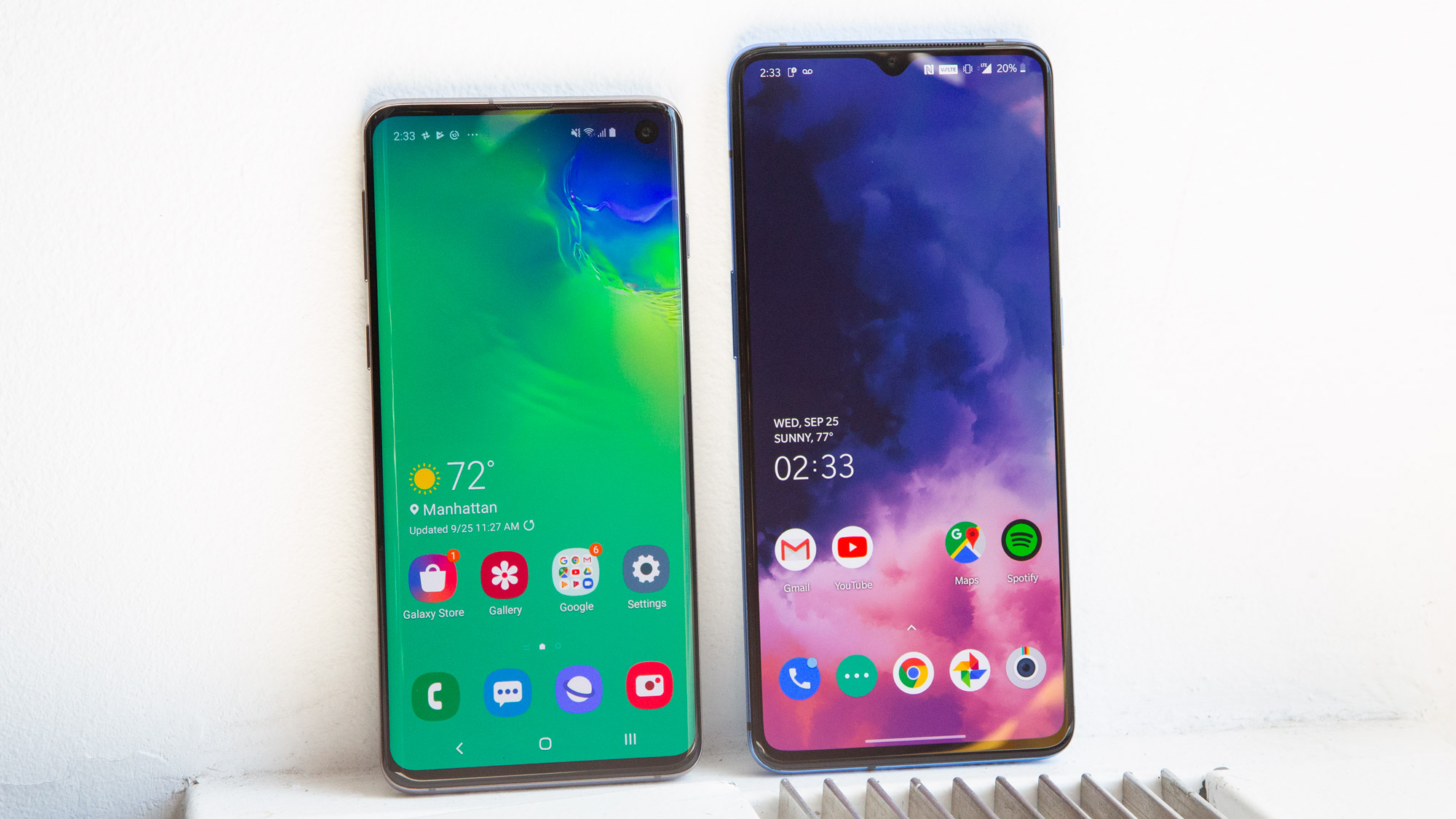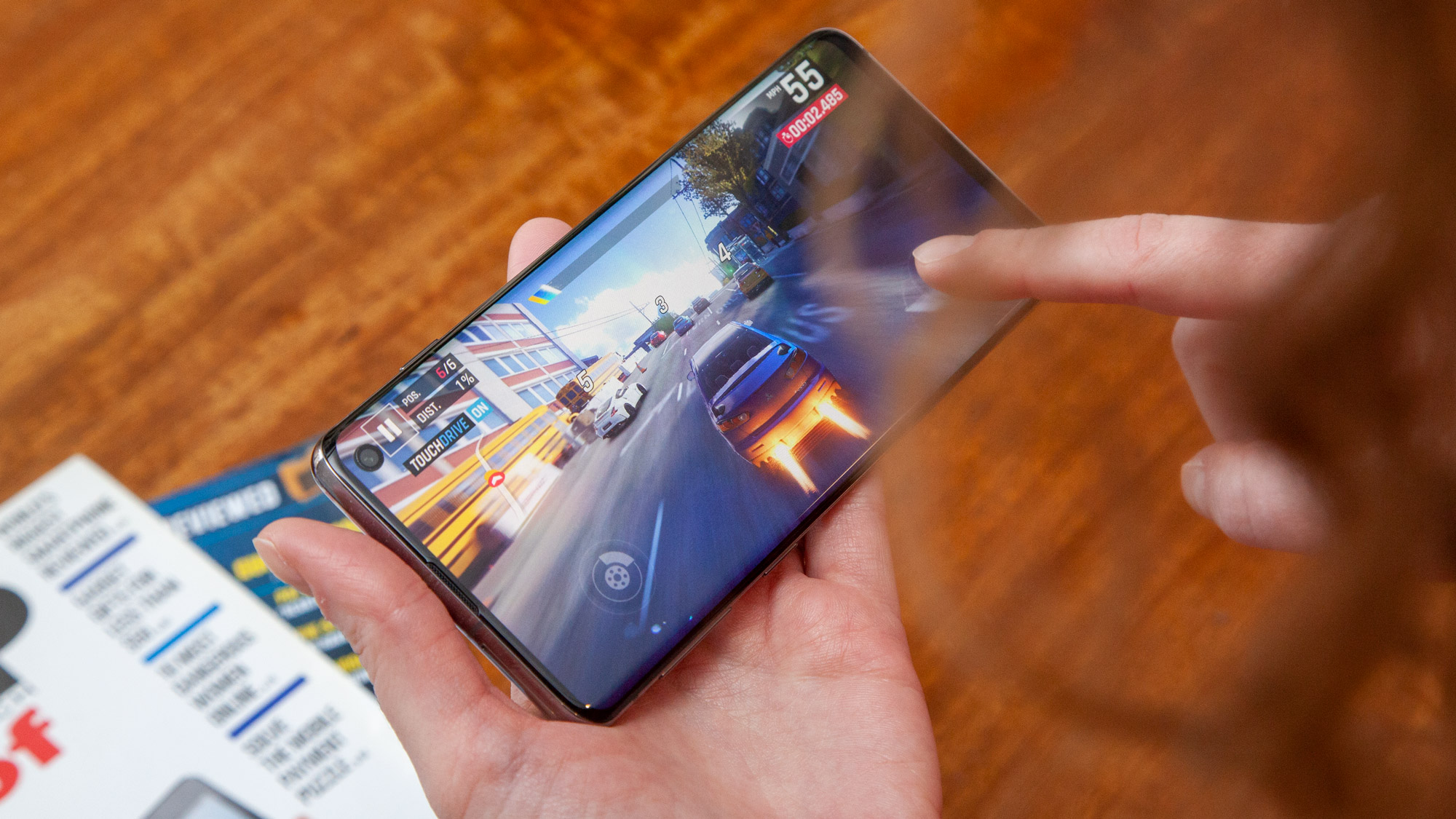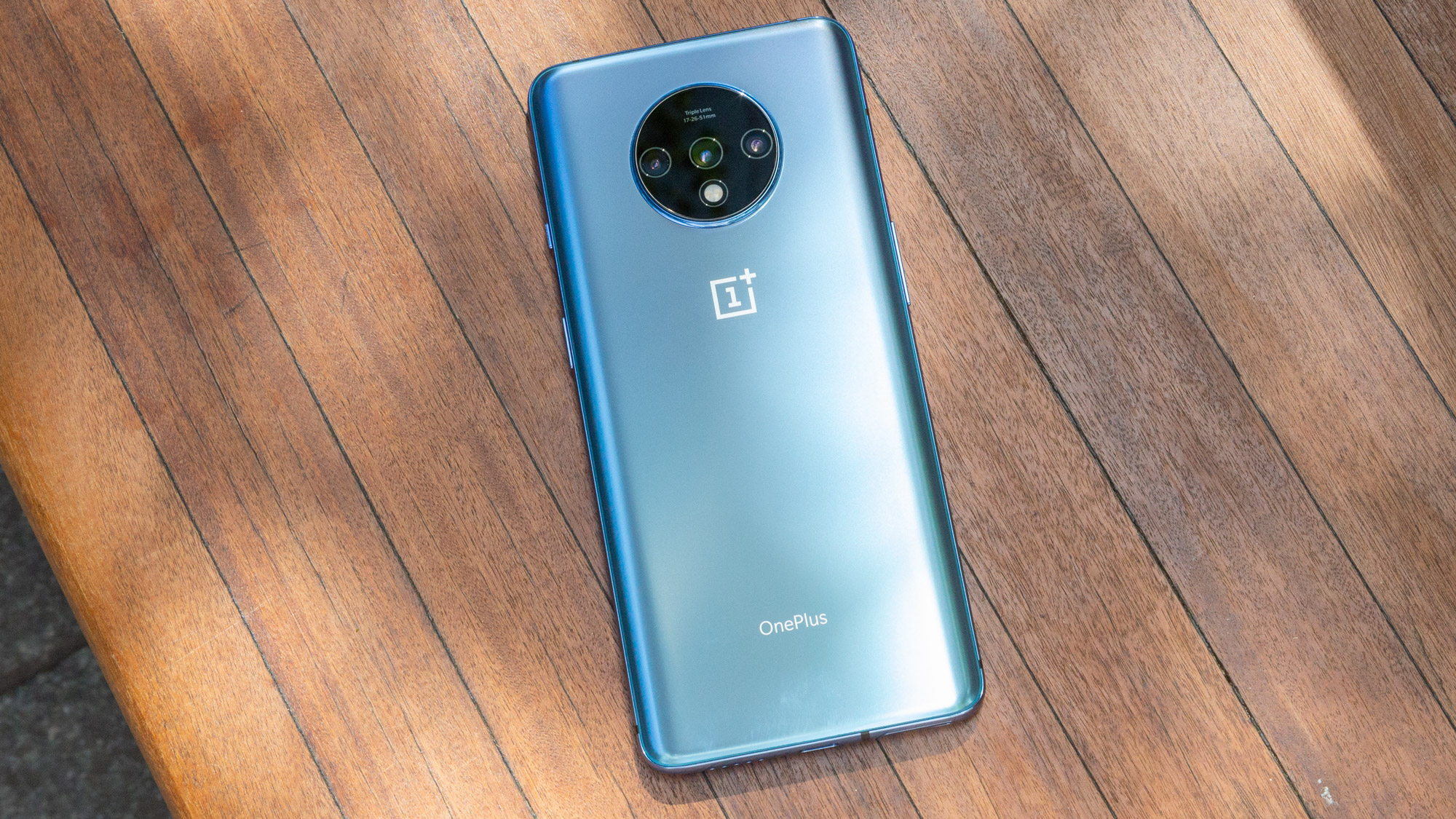OnePlus 7T vs. Galaxy S10: Samsung Has Met Its Match

The OnePlus 7T delivers many of the things you look for in a premium smartphone — a superfast processor, gorgeous display and multi-lens camera — for just $599. But is it good enough to topple Samsung’s Galaxy S10?
That’s the question on our mind as we pit these capable Android handsets against each other. The OnePlus 7T certainly has the value-for-money angle covered. However, it doesn’t quite match the S10’s laundry list of features (OnePlus had to save costs somewhere, after all), nor is it as widely available, or functional with as many carriers. Here’s how they stack up.
Specs
| Row 0 - Cell 0 | OnePlus 7T | Samsung Galaxy S10 |
| Price | $599 | $899 |
| Display | 6.55-inch Fluid AMOLED (2400x1080; 90Hz) | 6.1-inch Dynamic AMOLED (3040x1440) |
| Rear Cameras | Triple: 48 MP (ƒ/1.6); 16 MP ultrawide (ƒ/2.2); 12 MP telephoto (ƒ/2.2) with 2x optical zoom | Triple: 12 MP (ƒ/1.5-ƒ/2.4); 16 MP ultrawide (ƒ/2.2); 12 MP telephoto (ƒ/2.4) with 2x optical zoom |
| Front Camera | 16 MP | 10 MP (ƒ/1.9) |
| CPU | Snapdragon 855+ | Snapdragon 855 (US); Exynos 9820 (WW) |
| RAM | 8GB | 8GB |
| Storage | 128GB | 128GB, 512GB |
| microSD slot? | No | Yes |
| Battery | 3,800 mAh | 3,400 mAh |
| Colors | Frosted Silver, Glacier Blue | Prism Black, Prism White, Prism Blue, Prism Green (except U.S.), Flamingo Pink (except U.K.) |
| Size | 6.33 x 2.93 x 0.32 inches | 5.9 x 2.77 x 0.3 inches |
| Weight | 6.7 ounces | 5.5 ounces |
Design
The OnePlus 7T is bigger than the Galaxy S10 in every dimension. It’s also bolder, with a massive circular camera module on the back that comprises three lenses.
In fact, from a design standpoint, these devices are remarkably different. The OnePlus 7T has a teardrop notch; the Galaxy S10 has a hole-punch aperture in the display for the front-facing camera. The OnePlus 7T has a useful alert slider; the Galaxy S10 has an annoying Bixby button. The OnePlus 7T barely fits in my jeans pockets; the Galaxy S10 is so compact, I forget I’m carrying it. It’s no wonder Samsung’s phone weighs more than an ounce less.

Oh, and here’s a big one — the Galaxy S10 has a headphone jack, something OnePlus ditched last year, much to our disappointment. And while both of these phones pack in-screen fingerprint sensors, the Galaxy S10’s is of the more secure ultrasonic variety, which means it’s harder to spoof and works even when the user’s hand or the display is a little wet.
Speaking of the wet stuff, the S10 benefits from IP68 water resistance. If you ask OnePlus, they’ll say their 7T is just as resilient against the wet stuff — but without an IP rating to verify the device has been built to achieve that standard, that claim can’t be assured.
I will give OnePlus credit for the matte treatment they’ve lent the 7T’s glass back — a little design touch that gives the phone a more premium feel. That said, Samsung’s handset simply sports a cleaner design that’s easier to live with.
Get instant access to breaking news, the hottest reviews, great deals and helpful tips.
Winner: Galaxy S10
Display
Both the 6.55-inch OnePlus 7T and 6.1-inch Galaxy S10 employ AMOLED displays, though that’s where the similarities end. The 7T’s screen tops out at full HD+ resolution, whereas the S10’s reaches quad HD+. That translates to a much higher pixel density for the much smaller S10 — 550 pixels per inch for Samsung’s handset, compared to about 400 for OnePlus’.

However, the 7T’s display can do something the S10’s can’t: refresh at a very smooth 90Hz, compared to the 60Hz of the S10 and pretty much all other phones. I can’t overstate how much 90Hz improves everything you see and do on your phone — from animations, to watching video, to simply lending a generally snappier and more responsive feeling to all tasks and games.
The S10’s screen can get brighter than the 7T’s, at 611 nits to 474 nits. That, plus the sharpness offered by a quad HD+ resolution, might lead you to believe the display in Samsung’s phone is better on paper. But the 7T’s higher refresh rate is truly a game changer — so good that it allows OnePlus to even the score.
Winner: Tie
Camera
Whether you choose the OnePlus 7T or Galaxy S10, you’ll be getting a triple-lens camera system with a standard wide-angle lens, a telephoto shooter capable of 2x optical zoom and an ultrawide camera built for stunning landscapes.
It’s only when you pour through the spec sheet that you begin to notice some differences. The primary sensor on the 7T is rated at 48 megapixels, though it bins four adjacent pixels together when necessary to allow more light in. The result yields 12-MP shots, which is actually what the Galaxy S10’s regular wide angle shooter captures natively. The S10’s main lens also can shoot at two different apertures — ƒ/1.5 and ƒ/2.4 — depending on the lighting scenario, while the 7T’s is restricted to ƒ/1.6. Both devices feature 16-MP and 12-MP sensors tied to the ultrawide and telephoto optics, respectively.
OnePlus’ and Samsung’s devices can take impressive photos in the dark, thanks to their respective Night modes. The 7T draws sharper details, especially in the distance, and paints a slightly brighter foreground, while the S10’s algorithms attack the scene with heavier contrast that emboldens the boundaries between objects. Overall, I think each rendition has its merits, though I prefer the way Samsung’s software lit the scene.
In the daylight, I took both phones outside to snap some portraits of my colleague Caitlin, only to find that OnePlus’ camera produced a slightly dim and blurry shot that totally missed the details in the subject’s face and hair. The colors are also artificially saturated compared to the more natural hues Samsung’s flagship captured.
Finally, I tested out each phone’s ultrawide lens from the edge of New York City’s Bryant Park. You may not be able to tell from the way this photo was cropped for the slider above, but the S10 actually incorporates a significantly wider field-of-view than the 7T, that ensures more of your surroundings are retained within the frame. I prefer the way Samsung’s software honed in on the lawn, sharpening those blades of grass such that you can individually see them when you zoom in. While I think the S10 gets more right here overall, and certainly works better as an ultrawide camera, I don’t mind the 7T’s relatively more realistic color palette.
Overall, the Galaxy S10 is the more reliable camera phone in most scenarios. It’s the phone I’d rather have with me on my vacation. That said, for all the money you’d save opting for the 7T, OnePlus’ photography is remarkably strong, and I don’t think the cheaper handset’s flaws would be as apparent if you were viewing them on their own, without a point of comparison.
Winner: Galaxy S10

Performance
The Snapdragon 855 Plus in the OnePlus 7T benefits from slightly higher peak CPU and GPU clock speeds than the standard 855 inside the Galaxy S10. Additionally, both devices come equipped with 8GB of RAM, though the OnePlus 7T’s is the newer UFS 3.0 kind, which provides faster read and write speeds.
This translates to better overall performance for the 7T, though only slightly. OnePlus’ device delivered a Geekbench 5 multi-core score of 2,759, compared to the S10’s 2,639 points. In GFXBench, a test focused on measuring graphics performance, the 7T’s result was also the better of the two, at 1,169 frames at 18 frames per second on the Aztec Ruins portion of the benchmark. The S10 finished closely behind, with 1,066 frames at 17 fps.
Winner: OnePlus 7T
Battery
What matters more to you: a longer-lasting battery, or one that charges back up more quickly? The Galaxy S10’s 10 hours and 19 minutes of longevity in Tom’s Guide’s custom web surfing battery test far exceeds the OnePlus 7T’s 8 hours and 47 minutes, even though the S10’s battery is smaller — 3,400 mAh, compared to 3,800 mAh. (We tested both phones over T-Mobile’s network.)
Yet it’s the 7T that recharges faster, thanks to OnePlus’ proprietary Warp Charge 30T technology that got the phone to 61 percent capacity in half an hour in our testing. The S10’s packaged 15-watt adapter can’t draw anywhere near that, and Samsung’s faster 25W and 45W charging bricks won’t work with the 6.1-inch S10. (The 6.7-inch Galaxy S10 5G works with the 25W standard, while only the Galaxy Note 10 Plus can make use of the 45W charger.)
You won’t be able to wirelessly charge your OnePlus 7T — that’s a feature reserved for Galaxy S10 users. Additionally, the S10 can be transformed into a wireless pad that can recharge other devices, like Bluetooth earbuds, using the phone’s Wireless PowerShare feature.
Winner: Galaxy S10

Software
The OnePlus 7T ships with OxygenOS 10.0, which is based on Android 10. As such, the 7T is one of the first non-Google handsets to receive the latest version of the platform. Conversely, the Galaxy S10 packs Android 9 Pie, featuring Samsung’s OneUI skin on top, and will likely be updated to Android 10 early next year.
Both OxygenOS and OneUI add many features missing from the stock Android experience, like the ability to create multiple instances of apps for different accounts, lock photos and videos in a private enclave and take scrolling screenshots. However, OnePlus’ interface is nicer to look at, feels a bit snappier to use, and features less of what you don’t want, like Samsung’s suite of services and Bixby.
What’s more, I much prefer OxygenOS’ gesture navigation system, which is more similar to Android 10’s, and more intuitive than Samsung’s approach. Couple that with OnePlus’ track record of distributing updates more quickly, and the 7T easily walks away with the victory in terms of software.
Winner: OnePlus 7T

Price and availability
The OnePlus 7T costs $599, is available for preorder now from OnePlus' site, and begins shipping Oct. 18. The phone can be purchased either unlocked or through T-Mobile in the U.S. However, the unlocked model is GSM-only, meaning it won’t work on most carriers that utilize the CDMA standard, like Sprint. I say “most” because the 7T can be coaxed into working on Verizon’s LTE network as a certified LTE-only device.
The Galaxy S10, however, is sold through every major carrier, and if you buy one unlocked it can be taken to both GSM- and CDMA-based networks alike. The catch is, of course, that the S10 starts at $899. However, the phone is frequently on sale nowadays, since it’s been on the market for six months, and you can snag one from Amazon for $799. Best Buy even has the unlocked model for $749, so long as you activate it the same day you buy it. For all the latest savings, give our list of the best Galaxy S10 deals a look. For deals all year round, check out our Samsung coupon codes.
Still, it’s hard to beat the 7T’s $599 starting price. The S10 claws back some points thanks to its wider availability, but OnePlus still walks away with the more compelling value proposition.
Winner: OnePlus 7T

Overall winner: Galaxy S10
Sure, the Galaxy S10 comes out on top in this faceoff, if you look strictly at the numbers. But it’s a testament to OnePlus’ execution that the 7T draws so close, even though it costs two-thirds of the price of Samsung’s device.
| Row 0 - Cell 0 | OnePlus 7T | Samsung Galaxy S10 |
| Design (10) | 7 | 8 |
| Display (10) | 8 | 8 |
| Camera (25) | 17 | 20 |
| Performance (15) | 14 | 12 |
| Battery (20) | 14 | 17 |
| Software (10) | 9 | 7 |
| Price and availability (10) | 9 | 7 |
| Total (100) | 78 | 79 |
All things being equal, and if price were no object, I’d rather have the Galaxy S10 for its friendlier design, more reliable cameras, versatility in wireless charging and expandable storage and its headphone jack. But for $599, OnePlus’ 90Hz display, serviceable shooters, fantastic build quality and wonderful software experience still makes it a great deal. If you can’t find the Galaxy S10 for much less than MSRP, you can save a serious chunk of change and snag a OnePlus 7T instead.
Adam Ismail is a staff writer at Jalopnik and previously worked on Tom's Guide covering smartphones, car tech and gaming. His love for all things mobile began with the original Motorola Droid; since then he’s owned a variety of Android and iOS-powered handsets, refusing to stay loyal to one platform. His work has also appeared on Digital Trends and GTPlanet. When he’s not fiddling with the latest devices, he’s at an indie pop show, recording a podcast or playing Sega Dreamcast.
